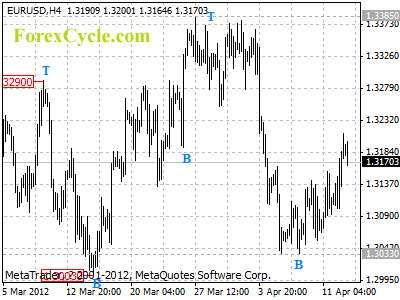It sounds like science fiction – mining for metals at the floor of the Pacific Ocean, at a depth of four kilometres.
More people have been to the moon than the depths of the ocean. So how on earth could we mine the ocean floor?
How would you operate machinery at that depth? Get the minerals to surface? Or avoid causing environmental damage?
And, more importantly, how are the drill rig operators supposed to have a smoko break?!
When it comes to mining in such extreme places, there are many challenges.
But the relentless global demand for minerals – communicated by higher prices for those minerals – forces us to look for answers to those challenges.
For example, the relentless demand for gold has led a South African gold mine, TauTona, to an incredible depth of four kilometres into the ground. It is so deep into the earth’s crust that the rock they mine is 60′C. They have to refrigerate the air in the mine to avoid cooking the miners alive. Refrigerating large spaces costs a great deal, and is only possible because of ever-rising gold prices.
“Easy to Get” Resources Disappearing
The fact is that all the easy gold has gone. It is getting harder – and therefore more expensive – to mine gold. So if buyers want gold, they need to pay more to cover the costs of getting it from increasingly extreme places.
It’s the same story with oil. The global economy now uses over a billion barrels every fortnight. Our economy’s addiction to it forces companies to operate in some very unstable countries in the world, such as Iraq, Sudan, and Libya. We have also had to become more inventive, and develop new technologies to access unconventional oil.
This demand pushes explorers into challenging terrain. Karoon Gas (ASX:KAR) is drilling for oil in the Tupi field off the Brazilian coast. Floating two kilometres above the ocean floor makes things hard enough. But once drilling starts, there are five kilometres of rock to get through.
This is the reality of modern exploration. Our favourite commodities are getting harder to find. We have to go to greater extremes to get them. We have to become more inventive.
The evolution of hard rock mining took us from surface rock, to open pits, and then deep underground.
But land only takes up about a third of the planet’s surface. And we have explored a great deal of it already.
The ocean floor, however, takes up two thirds of the planet.
The next logical step in the evolution of hard-rock mining is to head for the ocean floor.
This may sound impossible, but mining companies trialled this successfully in the 1980s.
But this stopped when the United Nations (UN), which controls these international waters, wouldn’t grant the miners title.
However in 2001 the UN implemented its ‘Law of the Sea’, and started signing exploration contracts for prospective miners and governments. So getting ‘title’ is now possible.
And thanks to progress in the offshore oil and gas industry, mining the ocean floor is not the massive technological leap it once was. A growing number of players have been focusing on this ‘frontier’ in recent years, and things are gaining traction.
Underwater Ocean Mining – A New Frontier
In some ways, the deposits found on the ocean floor are easier to access than on land. Deep-sea vents leave large mineral deposits behind that stand for millennia, like giant termite hills, and can be very rich in minerals such as copper and gold. No actual sub-surface mining is needed. The machinery just needs to break bits off.
A Canadian-listed company, Nautilus Minerals (TSE:NUS), has been exploring and mining these old deep-sea vents around Papua New Guinea and Fiji. The results are impressive. The copper grade of its underwater deposits is 7.3%. To put that in context, the average grade of the land-based copper mines is just 0.5%.
Australia’s highest-grade copper project, Sandfire Resources (ASX:SFR), is lower at 5.6%. True, Sandfire also has 1.9 grams of gold per tonne as well. But Nautilus outdoes it here too, as it has 3.6 grams per tonne of gold. This is virgin territory. And because of that, these underwater deposits can have the kinds of grades you can only dream of from a land-based mine.
But Nautilus does face some daunting challenges. It still needs to break down the deposit using heavy machinery underwater. And at the moment this is only possible by using modified versions of what you would find on land.

When operating underwater there is no control of where the rock chips and debris go, which makes it messy. But one other deep-sea mining company that caught my attention will have a much simpler mining method.
Deep Green Resources, which is not listed yet, is targeting deposits at the bottom of the Pacific Ocean. It plans to collect the mineral-rich nodules (tennis-ball-sized rocks), scattered across the ocean floor. It will be more like harvesting potatoes underwater than mining.
Due to the unique combination of currents, pressure, and depth, these nodules form over time from the minerals dissolved in the water. And they are distributed evenly over a wide area between Hawaii and Mexico.
What makes these nodules so valuable are the metals, such as manganese, nickel and copper, within them. The value of these minerals combined would be the equivalent of having a deposit with a 10% copper grade. This is exceptional, and is 20 times the global average for copper projects.
It is estimated there could be almost 500 million tonnes of these nodules scattered across the company’s title. This puts Deep Green in the giants league, and would make it competitive with each of the biggest manganese, copper and nickel miners in the world.
If a project this big, at this grade, was on land, BHP or another major would have bought it already.
Mining the Ocean Floor – Sound Too Hard?
That’s what many experts thought when oil drillers first suggested floating oil rigs to target offshore deposits. Today offshore rigs accounts for a third of the world’s oil production.
The bottom line is that this would be commercially viable if the value of the minerals covers the cost of sucking the pebbles up from the ocean floor to a boat, and then transporting it to land to process them to a saleable product.
Compared to the immense cost of moving billions of tonnes of rock just to get to a land-based deposit, it may even be cheaper.
It is early days, but this is clearly the pointy end in the evolution of mining. The opportunity is there, and so is the technology. All that is needed is some risk-appetite, hard work, and pioneering spirit.
I’m not sure where we go next once we are mining the ocean floor…
Next stop, the moon?
Dr. Alex Cowie
Editor, Diggers & Drillers
From the Archives…
Disruptive Technology Stocks For Smart Small-Cap Investors
2012-04-06 – Kris Sayce
ASX 200: This Market is Toast
2012-04-05 – Murray Dawes
Why Every Bank Will Soon Be a Tax Collector for Every Government Everywhere
2012-04-04 – Merryn Somerset Webb
Not Even Saudi Arabia Can Save Us From High Oil Prices
2012-04-03 – Jason Simpkins
Good News For Oil and Resource Investors
2012-04-02 – Dr. Alex Cowie





 Tradervox (Dublin) – Janet Yellen, the Federal Reserve Vice Chairman indicated in a speech yesterday that the accommodative policy adopted by the Federal Reserve is necessary in the present economic circumstances. This is in line with the Fed’s view that the borrowing costs should be held low until 2014 to allow the economy to make full recovery. The Fed Vice Chairman Janet Yellen was talking in New York in a round of Fed speeches which have been going on throughout the week. Federal Reserve Chairman Ben S. Bernanke spoke on Monday and he is expected to give another speech on Friday.
Tradervox (Dublin) – Janet Yellen, the Federal Reserve Vice Chairman indicated in a speech yesterday that the accommodative policy adopted by the Federal Reserve is necessary in the present economic circumstances. This is in line with the Fed’s view that the borrowing costs should be held low until 2014 to allow the economy to make full recovery. The Fed Vice Chairman Janet Yellen was talking in New York in a round of Fed speeches which have been going on throughout the week. Federal Reserve Chairman Ben S. Bernanke spoke on Monday and he is expected to give another speech on Friday.